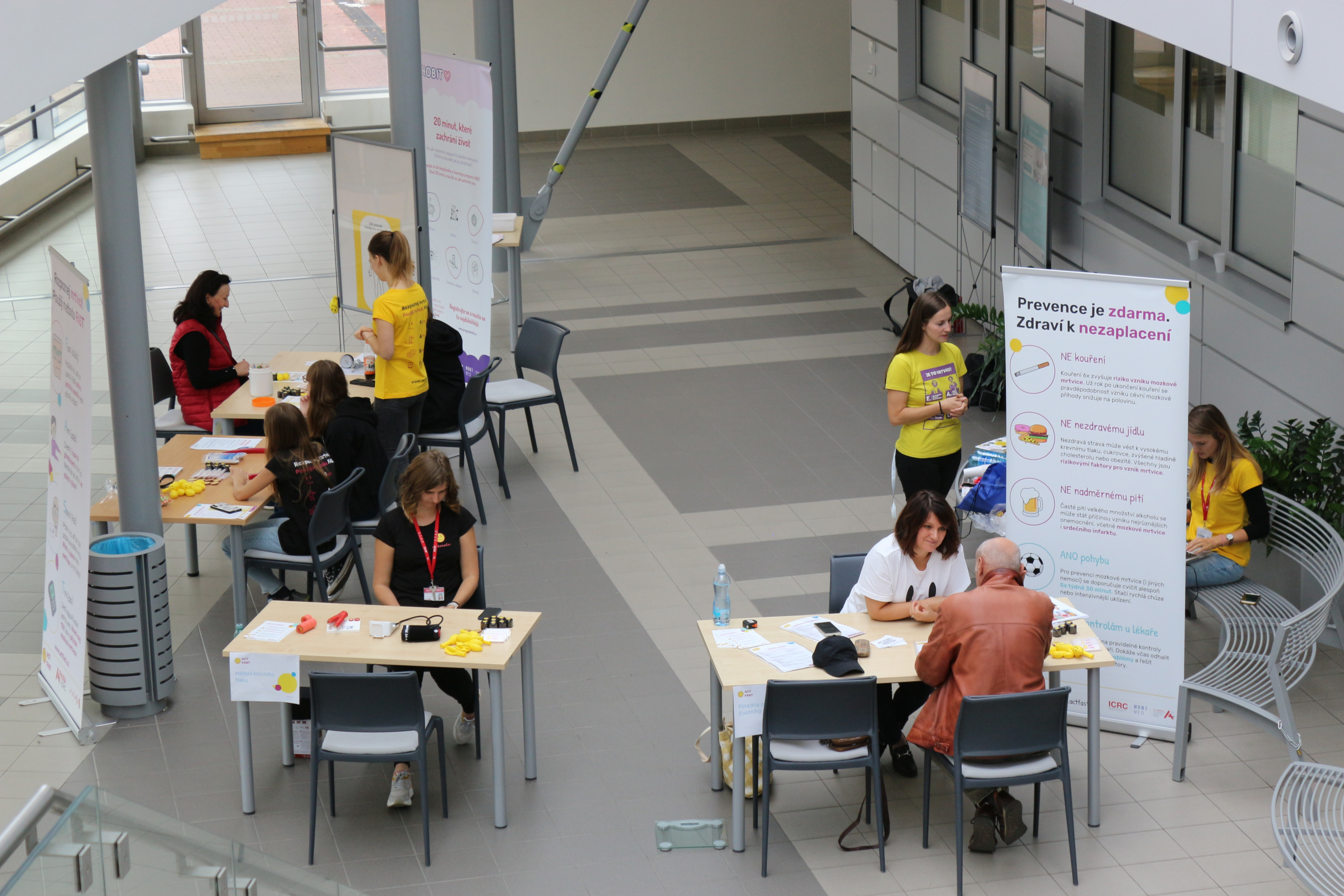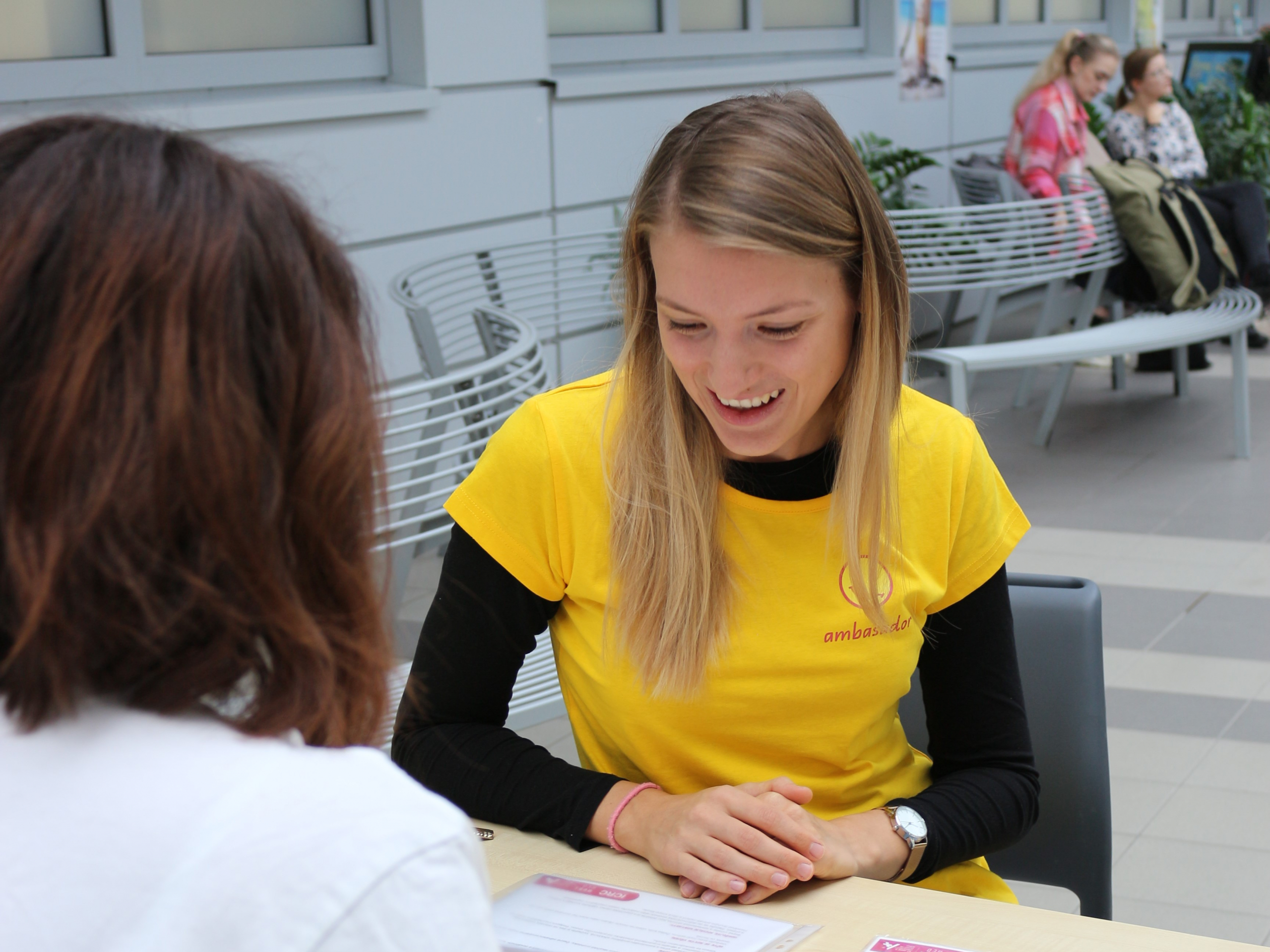Together Against Stroke: We Taught Patients at St. Anne Hospital To Act Fast and Save Lives

This Sunday marks World Stroke Day, and on this occasion, the girls from the Public Health Group of our Stroke team set out into the corridors of St. Anne Hospital to support awareness of stroke prevention.
Prevention is free, and health is priceless. So, on Wednesday, October 25th, the Public Health Group led by Hana Maršálková demonstrated to patients at FNUSA how to unite against stroke. In the space near the hospital Café, visitors could experience the symptoms of a stroke firsthand, attempt to detect a stroke using CT scans, measure their blood pressure, or seek advice from an expert in healthy lifestyle. Of course, they also learned the basics of prevention, especially early recognition of stroke symptoms, and acquired the ability to react quickly.
Up to 80% of stroke cases can be prevented with proper care. Stroke affects one in four people during their lifetime, and one-third of all cases result in the patient’s death. Additionally, stroke is the most common cause of permanent disability. Immediate medical intervention significantly increases the chances of surviving a stroke without consequences.
“In the Czech Republic alone, approximately 25,000 people are affected by this condition each year, and only one-third of them fully recover. That’s why we focus on education in the field of prevention. With proper care for physical and mental health, up to 80% of cases could be prevented,” explains the head of the Public Health Group, Hana Maršálková.

Hana Maršálková, leader of Public Health Group
It is essential to recognize the key symptoms immediately
When suspecting a stroke, time is crucial. Both laypeople and experts use the so-called FAST method to recognize a stroke. Along with other important information on stroke prevention, the Public Health Group educated hospital visitors on this method. “The key is to know the three most common symptoms – a drooping corner of the mouth, sudden speech impairment, and weakening of the upper or lower limb on one side of the body,” lists the symptoms Professor Robert Mikulík, the head of the Cerebrovascular Research Team at FNUSA-ICRC. Once at least one of these three mentioned symptoms is recognized, it’s time to act, and it’s essential to call 155 or 112 immediately.

